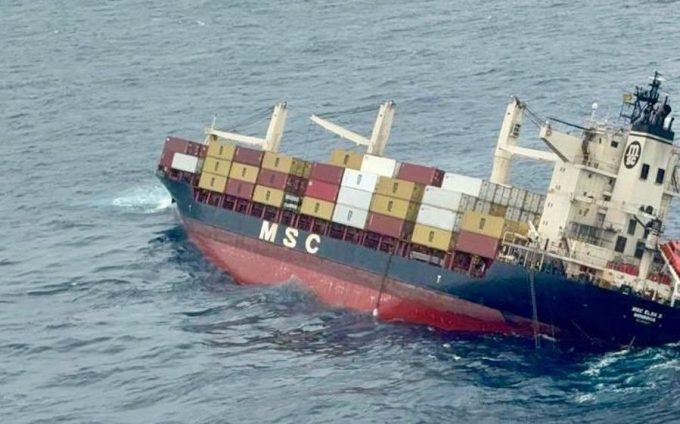Foxconn faces iPhone challenges in India following Chinese pressure
Apple contract manufacturer Foxconn is facing multiple operational challenges in India due to the tactical ...

Kerala state government authorities in India are reportedly weighing available legal options to hold owner/operator MSC responsible for the MSC Elsa 3 accident off the Cochin coast last Sunday.
The sinking of the Liberia-flagged ship – en route from Vizhinjam to Cochin ...
MSC switches two more Asia-Europe port calls from congested Antwerp
Front-loading frenzy has made traditional H2 peak season 'unlikely'
Canada and Mexico get cosy with trade plan to bypass US
Tradelanes: Export boom in Indian sub-continent triggers rise in airfreight rates
Carriers introduce surcharges as congestion builds at African ports
Mexican airport modernisation plan unlikely to boost cargo facilities
Ports and supply chain operators weigh in on funding for CPB
Tradelanes: Overcapacity on Asia-S America impacting alliances and rates

Comment on this article
Rajeev Kathuria
June 01, 2025 at 12:30 pmWhen a vessel sinks within a nation’s territorial waters, that country’s maritime agencies have a legal duty—and a moral and environmental imperative—to intervene immediately. In this case, the MSC vessel (MSC ELSA 3) sank off the Kerala coast in Indian waters, prompting the Indian Coast Guard, Navy, and relevant port authorities to marshal rescue and salvage operations. Their immediate response isn’t a reflection on the crew’s overall competence but a matter of ensuring safety, containing hazardous materials, and protecting the local environment 2.
Indeed, the captain and crew hold primary responsibility for the vessel’s operation, including taking preventive measures. However, maritime protocols clearly outline that once a distress call is issued, the priority shifts to saving lives and mitigating further risks, regardless of any potential human error. The fact that a distress signal was given indicates that the crew acted according to established safety procedures, alerting the proper agencies to a rapidly deteriorating situation. In such emergencies, factors like technical failure—in this incident, possibly linked to ballast water management issues—and vessel age come into play, which can complicate what might otherwise be seen as purely human error .In this context, rescue operations by Indian agencies aren’t about assigning blame but about managing the crisis in real time. When hazardous cargoes are involved—ranging from fuel to chemical materials—the immediate goal is to protect marine life, coastal communities, and the overall ecosystem from potential disasters. The coordinated efforts by Indian agencies reflect a systems-based approach where multiple factors are examined later through a formal investigation, rather than hastily placing sole responsibility on the crew 3.
This incident also underscores the importance of robust maritime safety protocols and the critical need for communication between vessel crews and local rescue authorities. Even though the MSC vessel’s captain and crew are expected to take proper preventive actions, the issuance of a distress call rightly activated local response measures that prioritize human life and environmental integrity over immediate fault-finding. It’s a reminder that in maritime emergencies, effective response and prevention of further harm often depend on swift, coordinated action by local agencies, not just on the actions taken by a single vessel’s crew.
There is also an underlying lesson here about continuous improvement in maritime safety standards. Incidents like these prompt regulatory bodies and shipping companies alike tore-examine risk management strategies, technical maintenance, and emergency preparedness protocols. As investigations proceed, stakeholders will likely explore systemic factors—such as equipment aging, mechanical failures, and operational procedures—to prevent future occurrences while ensuring that effective rescue measures are readily available when needed.